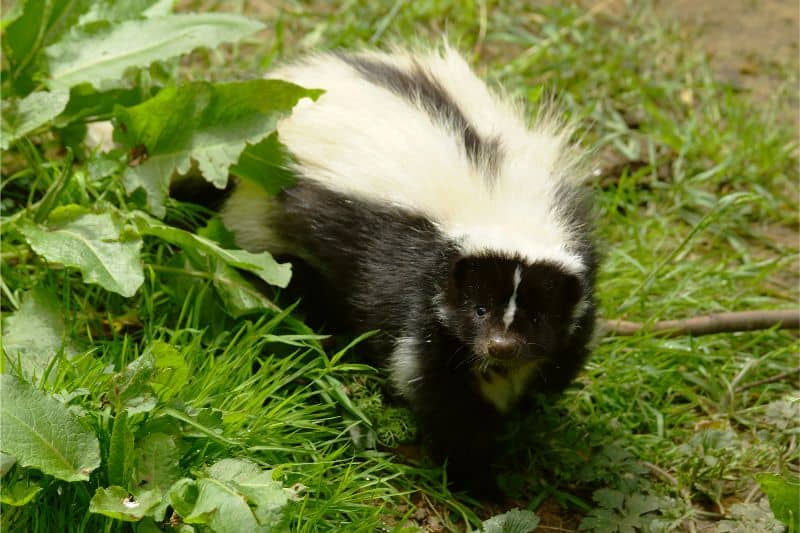A Stinky Situation: What to Do if Your Pet is Sprayed By a Skunk

Oh, the unmistakable aroma of that stinky spray from a skunk’s backside, and almost always at the most inconvenient of times! Dogs and skunks tend to meet more often than we would like, and once they do our pets often bring home that lingering smell as a souvenir.
The staff at Rocklin Ranch Veterinary Hospital has been there, done that. We want to share all of our secrets about what that odor is, how to avoid an encounter, and what to do if your pet ends up sprayed by a skunk.
A Smelly Substance
Those who have smelled skunk spray will recognize the smell immediately. While definitely stomach-turning, this bodily fluid is actually pretty amazing.
Skunks have two anal sacs just inside thier anus that store this smelly secretion. This is the same set up dogs and cats have (ever heard of anal glands?). Skunks are unique in that they have voluntary control over the release of their fluid.
Skunks are pretty chill critters, but when scared or threatened they don’t hesitate to use their anal sacs to their advantage. They can spray accurately over several feet.
Avoiding Being Skunked
The best way to avoid dealing with skunk spray is to avoid upsetting a skunk in the first place. Keep the following in mind:
- Skunks are crepuscular, making dawn and dusk encounters more likely.
- Skunks are more active in warmer weather. Consider accompanying your pet outdoors at peak times.
- Keep food sources like garbage, pet food, and compost inaccessible to skunks to avoid a squatter on your property.
- Skunks like to live under and in things like brush, tree stumps, and wood piles. Keep your yard clear of potential habitats to make things less inviting.
- Do not allow your dog to harass wildlife. Most skunks will only spray if their initial warnings are not heeded.
If Your Pet is Sprayed By a Skunk
If you are unfortunate enough to have a pet who has been sprayed by a skunk, take a moment to assess the situation. Try not to let your pet indoors before you have a plan, lest your humble abode have a unique reek that is near impossible to cover.
- First, make sure that your pet is okay. Most dogs are sprayed on or near the head. If the spray is ingested, it can cause nausea and vomiting. Likewise, it can be very irritating to the eyes. Call us right away if your pet is in distress or has spray in the eyes or mouth.
- Skunks are also potential rabies carriers, and while most times no physical contact is made, please let us know if your pet has injuries or is overdue on vaccination.
Bathing Your Pet
If your pet has been sprayed by a skunk, pick a spot to bathe him (ideally outside if at all possible). If you have a de-skunking shampoo, wonderful! Most people, however, don’t keep this around. To make your own, mix:
- 1 teaspoon dishwashing detergent such as Dawn
- 1 cup baking soda
- 1 quart 3% hydrogen peroxide
This combination uses the dishwashing detergent to break apart the oils and peroxide and baking soda to neutralize the thiols into an odorless substance. Apply this concoction to the affected areas and rinse away the odor, taking care not to get it near the eyes or mouth.
Also note that peroxide may bleach dark fur. This is usually is preferable to the smell, though! You may also wish to still run out later to purchase a real skunk shampoo to kill any lingering odors, especially when your pet gets wet (moisture tends to make the smell worse).
Getting sprayed by a skunk is on almost no one’s bucket list, but if you find your pet in a stinky situation, knowing what to do is key. We hope that you never have the need to know about skunk spray, but if you do we are happy to have been able to help you learn how to beat it.

